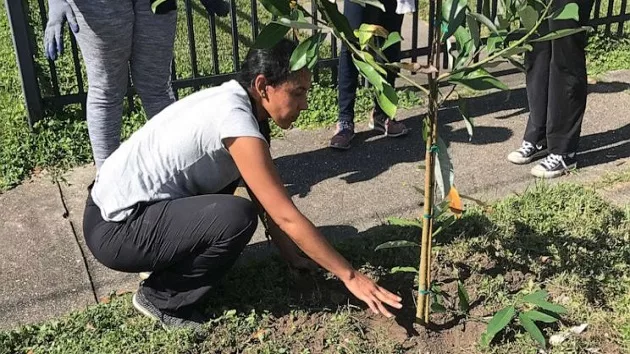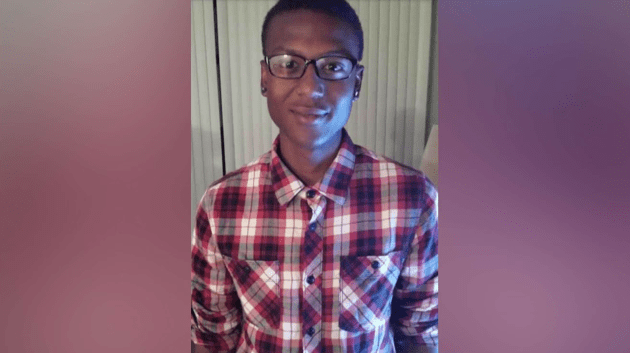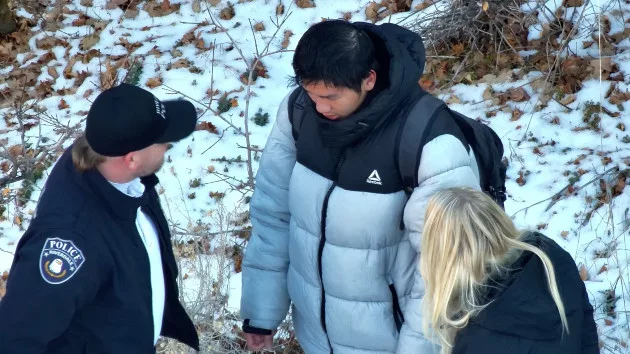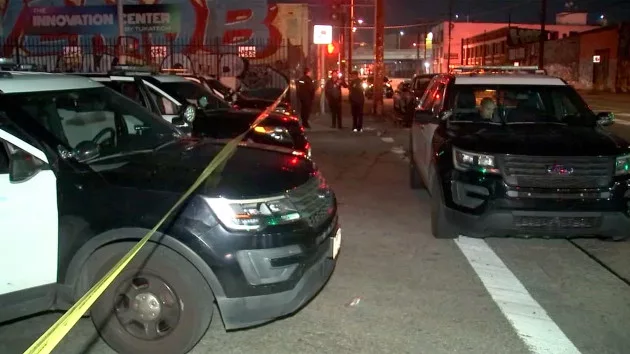
(NEW ORLEANS) — As extreme heat takes over the U.S., millions of Americans will be faced with the “urban heat island” effect.
The lack of vegetation and shade, as well as an increase in paved surfaces and buildings, is causing temperatures to rise as much as 20 degrees in an urban area compared to surrounding regions.
With July poised to be the hottest month in recorded history, the impacts of climate change for the 85% of the U.S. population living in metropolitan areas are already being felt.
Residents across the country are taking the dangers of extreme heat into their own hands and channeling nature to cool their neighborhoods.
In New Orleans – one of the worst urban heat islands in the country – neighbors are planting hundreds of trees throughout the city. It’s a simple yet effective solution to reducing urban heat.
Trees and vegetation lower surface and air temperatures, reduce energy use from air conditioners, improve air quality, and aid in stormwater management, according to the Environmental Protection Agency.
Trees provide shade, which could leave surfaces 20 to 45 degrees cooler and leads to evapotranspiration, the process by which water moves from the earth’s surface into the atmosphere and can reduce peak summer temperatures by 2 to 9 degrees, according to research from the Energy and Buildings journal.
New Orleans residents lead the reforestation
Angela Chalk, 60, is a fourth-generation New Orleans resident who lives in the Seventh Ward neighborhood. She lived through Hurricane Katrina, which decimated her city and uprooted the trees, homes, and lives of residents for years.
It’s estimated that New Orleans lost anywhere from 100,000 to 200,000 trees in the hurricane, according to tree-planting group SOUL (Sustaining Our Urban Landscape).
However, “in my community, we can’t relate to that because there weren’t any trees to begin with that we could miss,” said Chalk, an executive director of the non-profit Healthy Community Services, a local environmental advocacy group.
In some neighborhoods, particularly low-income or predominantly Black communities, less than 10% of the area is shaded by trees. The city’s Pontchartrain Park, one of the first suburban-style neighborhoods developed for African Americans in the segregated South, is one of these neighborhoods.
Low-income communities and communities of color are more likely than others to live in historically redlined neighborhoods that are intra-urban heat islands, according to the Environmental Protection Agency.
“We’re the first to be impacted and the worst to be impacted, and having those conversations in our community now is one of those things that we just can’t wait for it to be an acute issue. When we think about it, we have to think about it all the time and how it impacts our lives,” said Chalk.
Eugene Green, a city councilman and longtime resident of New Orleans, felt the intense heat while growing up in Pontchartrain Park but never thought about the role that the almost complete lack of trees played in his historic Black neighborhood during unbearably hot days. As an adult, it’s very clear to him.
“Pontchartrain Park is a good example of a community that is responding or is being responded to in terms of what effects discrimination and other problems had on the development of those communities,” said Green in an interview with ABC News.
SOUL, which is leading the New Orleans Reforestation Plan, worked to identify similar neighborhoods and is working to begin the city’s reforestation by ensuring that all neighborhoods have at least 10% of tree canopy coverage and shade.
This makes for an equitable and attainable starting point for the project, said Susannah Burley, the executive director of SOUL. From here, they can continue to grow the canopy, or tree cover, fairly throughout the city.
In Pontchartrain Park, the organization is planting a tree in front of every household that wants one. The organization said it has a 70% opt-in rate.
“That neighborhood is completely transformed,” said Burley. “You drive down blocks that had no trees and now there’s trees down almost every single block.”
At the center of climate change impacts
Extreme heat causes hundreds of deaths per year nationwide, according to the Centers for Disease Control and Prevention. Several populations are threatened when temperatures stay high — including those who live without air conditioning, have health conditions worsened by heat, work outside, are homeless, are elderly and more.
After Hurricane Katrina, New Orleans residents were left to face the heat amid the devastation and wreckage of the storm.
“The city felt so much hotter because we just had no shade. We lost so many of our big, beautiful magnolia trees and live oak trees,” said Connie Uddo, the director of the NOLA Tree Project, which is also planting trees throughout the community. “The city was just struggling. The recovery was just like moving through sludge. Everybody was just doing nothing but cleaning. And really the question is: Are these neighborhoods able to come back?”
Although trees are an effective way for communities to address heat, many residents remain unaware of their impact. In New Orleans, trees are seen by some as dangerous or a liability in a city that faces an intense annual hurricane season.
“Katrina, it’s long ago in the calendar but it’s still at the front of everybody’s memory. It seems like yesterday and so people are worried about having trees falling over in a storm and causing more damage than they already have from wind,” said Burley. “So we are really careful to mitigate that fear by planting the right tree in the right spot. “
Trees are not just heat management, but can also act as a barrier for flooding and storm intensity as they store tens of gallons each day and reduce runoff and erosion.
Convincing residents on the impacts of tree-planting has been a priority for local advocacy groups.
“The regular person doesn’t think about placing a tree on the south side of their home and shading it in the summer. And then if you plant a deciduous tree, you’re gonna get heat in the winter. But, you know, once you start explaining this to people, they start sharing the information and it’s really exciting to see converts sharing the information,” Burley said.
Deciduous trees are those that become dormant during winter.
The EPA reports that the benefits of urban tree canopies are “always higher than the costs” of their maintenance.
A five-year study in the Journal of Forestry found that cities “accrued benefits ranging from about $1.50–$3.00 for every dollar invested. These cities spent roughly $15–$65 annually per tree, with net annual benefits ranging from approximately $30–$90 per tree.”
“One tree isn’t gonna change how a neighborhood responds to a storm event, but if you plant a whole neighborhood with trees, then you can change how the neighborhood responds,” Burley said.
NOLA Tree Project and SOUL say tree planting efforts give residents a hands-on control to the impacts of climate change on their community. Education is a priority as tree-planting projects expand.
“People can go back and forth and fight all they want about climate change, or fossil fuels and the fossil fuel industry and the big bad guy,” said Uddo. “While all that is going on, what can you do right now, right now to have a positive impact on climate change? Buy a tree.”
Copyright © 2023, ABC Audio. All rights reserved.





